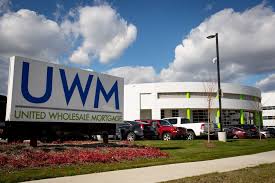30 year fixed mortgage rate is a type of home loan with a repayment period of 30 years and an interest rate that remains fixed for the entire duration of the loan. It is one of the most popular mortgage options among homeowners and homebuyers in many countries, including the United States. This type of mortgage offers stability and predictability, making it easier for borrowers to plan and budget their monthly payments over a long period of time.
The interest rate on a 30 year fixed mortgage is determined at the time of the loan origination and remains constant throughout the life of the loan, regardless of changes in the broader financial market. This means that the borrower’s monthly principal and interest payments will remain the same over the entire 30-year term, providing a level of certainty and peace of mind.
One of the key advantages of a 30-year fixed mortgage is the lower monthly payment compared to shorter-term mortgages. The extended repayment period allows for the distribution of the loan amount over a longer timeframe, reducing the amount of principal and interest that needs to be paid each month. This can make homeownership more affordable for individuals and families who may not be able to handle higher monthly payments associated with shorter-term mortgages.
Additionally, the fixed interest rate protects borrowers from rising interest rates in the future. Even if interest rates in the market increase significantly, the borrower’s interest rate and monthly payment remain unaffected, providing a hedge against inflation and market volatility. This stability is especially valuable for homeowners who plan to stay in their homes for an extended period.
However, there are some considerations to keep in mind when opting for a 30-year fixed mortgage. While the lower monthly payments may be more manageable, the longer repayment period means that borrowers will end up paying more in interest over the life of the loan compared to shorter-term mortgages. This is because the interest is spread out over a longer duration, resulting in a higher total interest cost.
Furthermore, the extended commitment to a 30-year mortgage may limit financial flexibility. The longer-term nature of the loan makes it harder to pay off the mortgage early or refinance without incurring additional costs. Borrowers who anticipate changes in their financial situation or plan to move in the near future should carefully evaluate whether a 30-year fixed mortgage is the most suitable option for their needs.
In summary, a 30-year fixed mortgage rate offers stability, predictability, and lower monthly payments compared to shorter-term mortgages. It allows borrowers to plan and budget their finances effectively over a long period of time. However, it’s important to consider the potential drawbacks, such as higher total interest costs and reduced flexibility, before committing to this type of mortgage. Ultimately, borrowers should carefully assess their financial goals and circumstances to determine whether a 30-year fixed mortgage is the right choice for them.
Here are some of the benefits of a 30-year fixed mortgage:
- Predictability: Your monthly payments will stay the same for the entire term of the loan, regardless of changes in market interest rates. This can give you peace of mind and help you budget for your monthly expenses.
- Affordability: 30-year fixed mortgages typically have lower monthly payments than shorter-term mortgages, such as 15-year fixed mortgages. This can make them more affordable for borrowers with lower incomes.
- Tax benefits: The interest you pay on your mortgage is tax-deductible, which can save you money on your taxes.
Here are some of the drawbacks of a 30-year fixed mortgage:
- Higher interest rates: The interest rate on a 30-year fixed mortgage is typically higher than the interest rate on a shorter-term mortgage. This is because lenders are taking on more risk by lending money for a longer period of time.
- Higher monthly payments: The monthly payments on a 30-year fixed mortgage will be higher than the monthly payments on a shorter-term mortgage. This is because the borrower is paying off the loan over a longer period of time.
- Longer term: A 30-year mortgage will take you longer to pay off than a shorter-term mortgage, which means you’ll pay more interest over the life of the loan.

